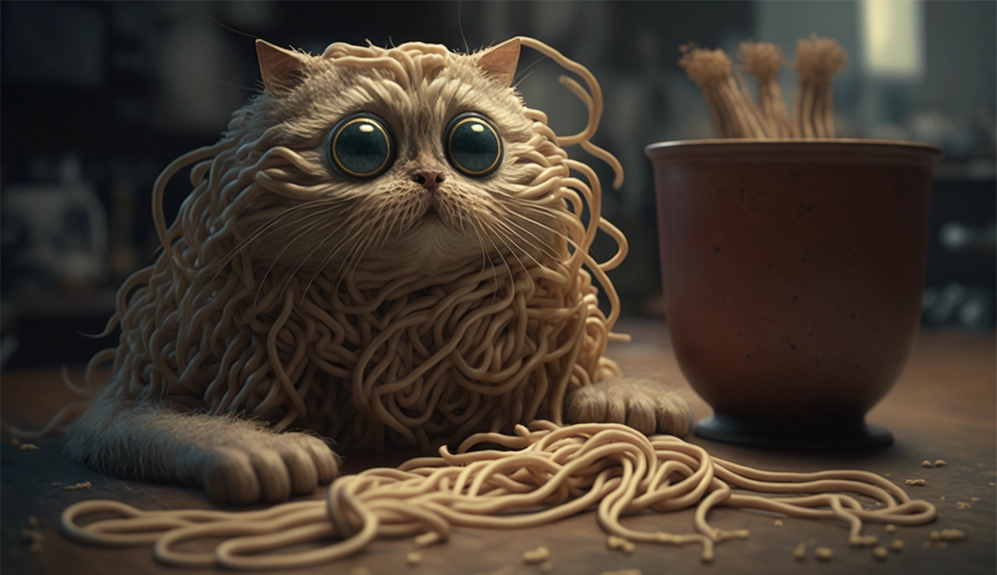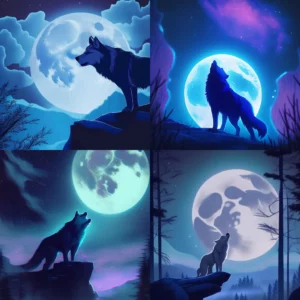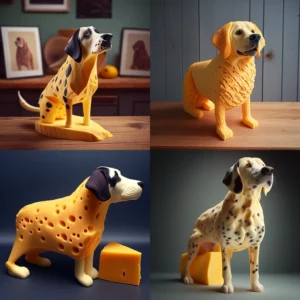6 Tips for Amazing Prompts in Midjourney
We constantly are using Midjourney here at our website to create images for our articles, it can be a very effective tool in many different fields that you are operating in whether that is a personal blog, marketing, youtube, or some other art project. Now – Midjourney takes some level of skill to create particular images you desire, so you have to use precise wording and prompts to get better results. In this article, I want to go through a couple of examples and steps on how to get better.
1) Image Dimensions Lead to Different Results
First thing is to understand that Midjourney has the capability of using different image dimensions when creating prompts by default the images are boxed and the upscaled image dimension ends up being 1024×1024 unless you obviously end up choosing for “light upscale redo” or “beta upscale redo” options obviously. While MJ has excellent upscaling potential, sometimes end results are blurry which is why I do recommend getting Gigapixel AI for some after-tuning.
Poisonous Green Cat in the jungle
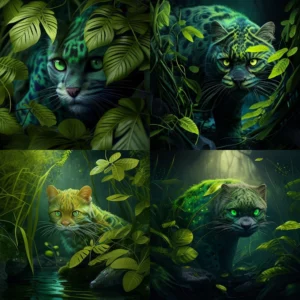
So here we have a normal prompt that I used to create a simple image concept with Midjourney. Now if we have to want to have a widescreen image like a banner or top-down style image you have to add a specific line of code in the end of the prompt in order to change it. Like this:
Poisonous Green Cat in the jungle --ar 16:9
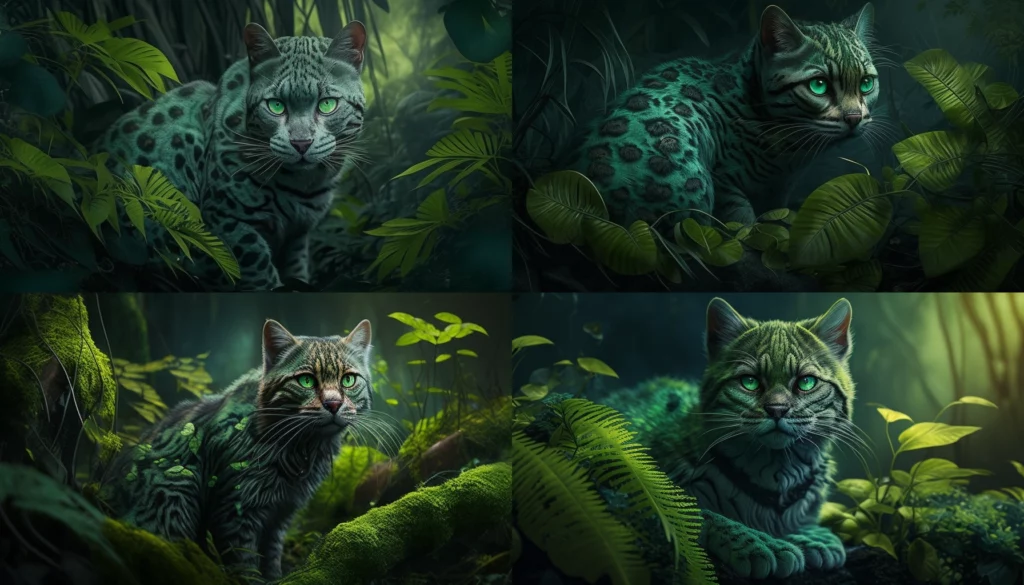
So as you can see the image changed somewhat drastically from the initial design that Midjourney prompted (Of course it randomizes every time) key takeaway here is that when we gave more breathing space for a larger image the AI went for images that capture the full body of Cat better. This is a setting I would use for a lot of landscape-related things as well. If you don’t want to go with --ar 16:9 you also have the option to go for that old-school TV --ar 4:3 or perhaps --ar 1:2 for that vertical image.
In order to use something like 1:4 you have to use --ar 1:4 --v 5 at the end of the prompt and I have to say that may lead to some black cropping at the top that doesn’t look very great.
2) Using Niji Mode & MJ Test Photo for Different Look
The other important tip about prompting is the mode that you are using, by typing /settings in discord when talking to Midjourney in private you are able to change between Niji Mode, MJ Test, and MJ Test Photo. So for starters, we have Niji Mode which is essentially tailored for more Anime/Manga & Illustration style approach, so if you are not going for something realistic this is what you would get with the following prompts (Alternatively you can use --niji at the end of the prompt if you don’t want to swap around in the settings each time you are switching styles )
A Wolf watching the moonlight --niji
Now this image clearly has more anime aesthetic to it and the second image turned out to be rather nice, while the third ended up generating 2 mouths and missing one leg. For the V4 this can be a quite common problem when doing animals or sometimes people have twisted or missing fingers for instance.
Now, let’s switch to MJ Test Photo and see if we can manage to get a more photo-realistic depiction of our prompt.
A Wolf watching the moonlight --testp
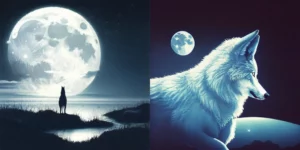
When you are using this mode there are two things worth mentioning, one being that this will only create 2 prompts instead of 4 and the other thing is that it takes a lot longer to actually generate the image than your average prompts. The MJ Test Photo doesn’t actually 1:1 mean you are gonna get images that look like they are shot with a camera, they just depart away from more illustration style that you normally get.
Personally, I’m not a big fan of this mode at its current state and I wasn’t able to get that amazing prompts with multiple tries, but it may be something you want to try out.
3) Referring to Existing Artists, Styles & Painters
The Midjourney AI is quite intelligent when it comes to understanding different art styles, artists, and painters for instance. So if you are trying to mimic someone’s work or approach you have the option to do so with Midjourney. So let’s try this prompt for instance:
A Dancing Kakapo drawn by Van Gogh
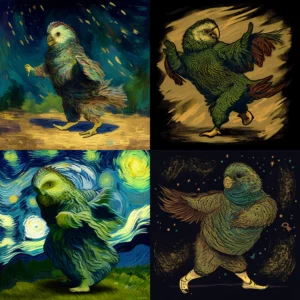
The Third result here for instance is quite exactly what Van Gogh would paint it as. Alternatively, you can this type of prompt, A Dancing Kakapo, drawn by Van Gogh for instance, or A Dancing Kakapo, Van Gogh Style for example. But let’s say we have a specific style we want, but there is no artist attributed to it or its made by multiple artists – then we can go for this style prompt:
A Dancing Kakapo, drawn in Ukiyo-e style
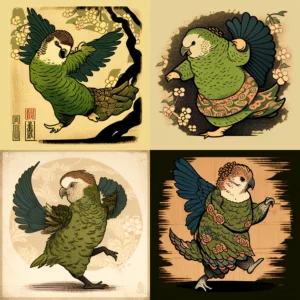
So as you can see it can distinguish a specific art style when told in a very accurate manner. You may add multiple art styles but it usually dominantly will use the first one rather than splitting it 50/50 based on my experience. But if you want to increase/decrease the artistic level of the prompts you can use this:
A Dancing kakapo, drawn by frank frazetta --s 900
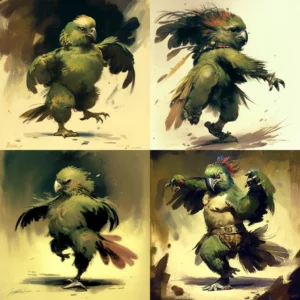
So this has a high level of “style” according to Midjourney this number is adjusted from 0 to 1000 in V4 the higher the number is the more so-called style you are going to get with the prompt. But let’s do this in reverse and decrease the style with the same prompt.
A Dancing kakapo, drawn by frank frazetta --s 50
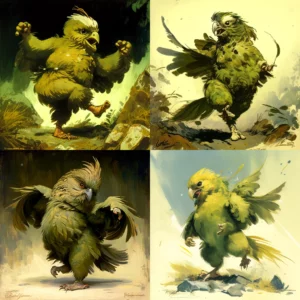
Both still have definitely the style of Frank Frazetta but here you can see more detail on the background whereas above it’s very brushy and undetailed on the background and the one below is closer to the style of Frank. You might want to experiment with these numbers. From /settings you can adjust from different options: Style Low, Style Med, Style High, or Style Very High – but you can just use your own numbers too as I did.
4) Specific Requests will Require Specific prompts
Midjourney is quite an imaginative tool and a lot of people have created crazy and odd-looking stuff from it. When I am searching for something less freestyle from MJ I am usually required to roll a lot of variations or just write a lot more exact prompts in order to get what I want. The thumbnail of this article is a good example of something that took a lot of tries before I got something I wanted exactly. So let’s try to create a “Dog made out of cheese that looks realistic instead of digital concept art”.
A Dog made out of cheese
So we got pretty close with our initial prompt, but we didn’t really give enough details and now they are kinda partially made out of cheese only. We have to change the prompt bit more detailed with some keywords that get us closer to what we want.
A Dog carved out of holed cheese, 8k, yellow, photo realistic, plastic look
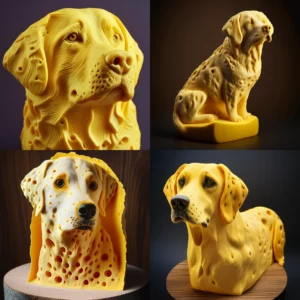
After adding a couple of extra keyword prompts and changing a bit of our sentence, we got a bit closer to the right-colored cheese dog I was looking for in the first place. There are plenty of different keywords that people use and I think the best way to learn about them is to go to Midjourney Gallery and see pieces of art and see what prompts those people have used. Despite having great descriptions and words you still may have to play around with variations to get exactly what you want.
5) Using Lighting Prompts to Create Realism
Another way to really adjust your results is to use keywords that have to do with lighting and color schemes. By Default Midjourney doesn’t really use these features that much depending on the prompt you give it, so you might want to feed a couple of these things based on what you are doing. So let’s try this for example
A Hyena in African Savannah, sunrise, bright light
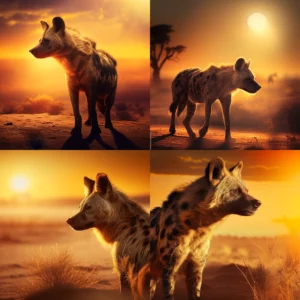
When using lighting keywords I do feel that it automatically will try to go for more realistic photographic art by default, which is to be expected and that’s very cool. Some other keywords in this niche are sunset or sky sunset. If we try the reverse and some night stuff we might want to go with a prompt like this
A Hyena in African Savannah, moonlight, moon, night lighting
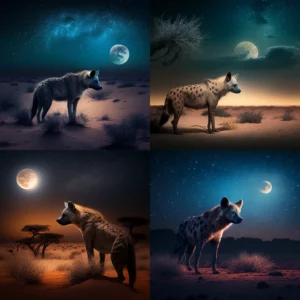
I’ve noticed that “moon” is a bit harder to do with certain prompts because Midjourney tends to go for a more concept art approach instead of being photo-realistic. To add more general coloring in your images you can use terms like warm colors or cold colors and this will sometimes drastically can change the outcome for better or worse. Regardless lighting prompts are key for more realism and highly detailed images.
6) Image References Help a Lot with Specific Characters
So if you have a niche movie, anime, game, or comic book that has a location or a character that you want art out of, simply writing the description sometimes is not enough to get accurate results. This varies very much on what exactly you are doing and was very problematic in earlier versions of Midjourney especially. So let’s give a normal example of you trying to recreate a character from somewhere:
zorii bliss from star wars wearing a helmet, digital art
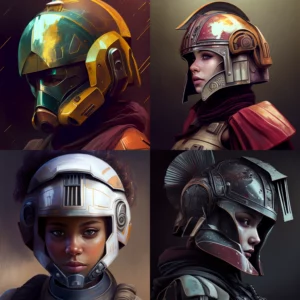
So here I wanted to try out a minor Star Wars character known as Zorii Bliss since she got really cool design, but there are moments in the movie where she is wearing the helmet and also when she isn’t.
So I had to add a prompt about wearing the helmet – now as you can see in one of the pictures she doesn’t even have the right skin color, while these do have somewhat of star wars aesthetic they aren’t anywhere close to resembling this character, so we are going to try the same prompt with a good reference image of her.
https://s.mj.run/Rv6WF5Nprjo Zorii Bliss from star wars wearing a helmet, digital art
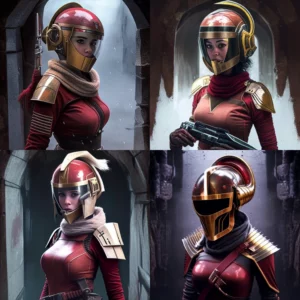
This time around we got very matching outfits and also the fourth image is quite close to the original design. With a couple of different variations and small tweaks, I could make it even closer, but this is just to show how much accuracy increases when you are using an image link with your prompt.
Pay in mind certain domains are totally blacklisted from this and I believe in the future there might be other art sites that will engage blacklisting midjourney and other AI tools from crawling their databases or allowing their images as forms of references. There is also /blend command in discord that allows you to merge two images together, it’s another niche tool that I haven’t experimented with super much yet, but I find it quite situational for the most part.
There are going to be more updates for Midjourney in the future for sure that are going to increase accuracy and probably improve the current problem of text, which is something that MJ is really poor at (Achilles heel basically for the AI) however the backward compatibility is something that they still at least currently supports so these prompts are always going to be relevant with V4 and V5 for now.
I’m sure we are gonna work on further guides here for you in the future once more updates roll out.
